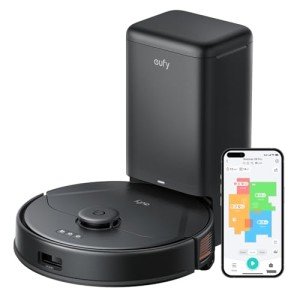Reinventing Home Cleaning: The Rise of Self-Emptying Robotic Vacuum Cleaners
In the age of wise homes and advanced innovation, robotic vacuum have emerged as essential tools for hassle-free cleaning. These compact devices have changed the way we maintain our homes, using convenience, performance, and the liberty to welcome a hands-off technique to household chores. But just when you believed it could not get any much better, a brand-new development has stepped into the spotlight: self-emptying robotic vacuum. This revolutionary feature is redefining home cleaning and strengthening its place as the ultimate service for modern-day homes.
The Evolution of Robotic Vacuums
Robotic vacuum initially acquired traction as a tech-savvy alternative to traditional vacuuming. Early models concentrated on basic cleaning functions, mapping and navigation, and automating an otherwise tedious task. With time, they started including smarter features such as sophisticated sensors, app combination, voice control, and room mapping technologies. While these advancements considerably improved efficiency and use, there was one consistent downside-- emptying the dustbin.
Even robot vacuum and mop self empty advanced robotics needed users to by hand empty their onboard dustbins, often numerous times a week depending on just how much dirt and debris was collected. For property owners, especially those with larger homes, animals, or allergic reaction issues, this chore could feel like a repeating inconvenience. Get in the self-emptying robot vacuum-- a development that eliminates this pesky job and presses the limits of convenience.
What is a Self-Emptying Robotic Vacuum Cleaner?
A self-emptying robotic vacuum is equipped with a docking station or base station that not just charges the gadget however also works as a dustbin storage center. After finishing a cleaning run, the vacuum go back to its base, where collected dirt, dust, and debris are automatically transferred from the robot's internal dustbin to a larger bag or container housed within the docking station. This system significantly lowers the requirement for frequent manual emptying, with some designs requiring attention only when every month or two.

Key Features of Self-Emptying Robot Vacuums
1. Hassle-Free Cleaning
With a conventional robotic vacuum, constant emptying of the dust container is important to guarantee peak efficiency. Self-emptying designs reduce this concern by supplying a larger storage capacity in the base system. The outcome? You can go weeks or perhaps months without needing to think about it.
2. Ideal for Pet Owners
Pet hair and dander tend to fill vacuum dustbins quickly. Self-emptying robotic vacuums are a game-changer for pet owners, keeping the cleaning procedure uninterrupted for longer durations and minimizing contact with allergens.
3. Allergy-Friendly Design
Numerous self-emptying designs include sealed bags in their docking stations, preventing dirt and irritants from being launched back into the air during disposal. This is outstanding news for those experiencing allergies or breathing sensitivities.
4. Enhanced Autonomy
The combination of self-emptying innovation with advanced scheduling and mapping capabilities suggests a robotic vacuum can clean an entire home with practically no human intervention. Whether you're at work or on holiday, you can feel confident that your floors will remain pristine.
5. Cutting-Edge Technology
Many self-emptying robotic vacuums are high-end gadgets and often come loaded with the latest developments. Anticipate enhanced navigation via LiDAR or cameras, compatibility with smart home environments like Alexa or Google Assistant, and multi-level mapping for bigger homes.
Leading Models in the Market
The self-emptying vacuum segment is quickly growing, with numerous major brands presenting competitive models. Here are a couple of standouts:
iRobot Roomba s9+.
Known for its outstanding navigation and powerful suction, the s9+ includes a Clean Base Automatic Dirt Disposal system. Its smooth design and robust app performance make it a popular option amongst tech-savvy users.
Shark IQ Robot Self-Empty XL.
Shark's self-emptying robot offers an affordable option with many high-end features. Its self-cleaning brush roll is an added perk for pet owners battling hair tangles.
Roborock S7 MaxV Ultra.
This hybrid vacuum and mop takes self-emptying an action even more, with a docking station that likewise cleans its mop pads and refills water tanks.
Ecovacs Deebot X1 OMNI.
A sophisticated model that not just empties its dustbin however likewise offers sophisticated mopping abilities and AI-driven navigation.
The Cost of Convenience.
While the convenience of a self-emptying robotic vacuum is indisputable, it comes at a cost. These models usually cost considerably more than their non-self-emptying equivalents, frequently varying between $500 and $1,500 or more depending upon the brand and functions. Nevertheless, for those who value time, benefit, and a cleaner home, the financial investment can be well worth it.
Are Self-Emptying Robots Right for You?
If you have a busy lifestyle, a large home, pets, or allergies, a self-emptying robotic vacuum cleaner can be a worthwhile addition to your cleaning arsenal. It offers unparalleled benefit and provides you with more spare time to concentrate on what really matters-- whether that's spending quality time with loved ones, relaxing, or pursuing your passions.
For smaller sized homes or users who don't mind by hand emptying the dustbin, a traditional robotic vacuum might be enough. However, as rates continue to drop and innovation advances further, it's only a matter of time before self-emptying functions end up being the basic across a lot of robotic vacuum models.
The Future of Home Cleaning.
Self-emptying robotic vacuums represent a major step toward completely autonomous home cleaning services. Combined with other clever home innovations, they paint an exciting photo of the future-- a world where cleaning is no longer a chore however a seamless, hardly visible part of everyday life. In the meantime, these devices are leading the charge in making our homes smarter, cleaner, and more self-sufficient than ever before.
